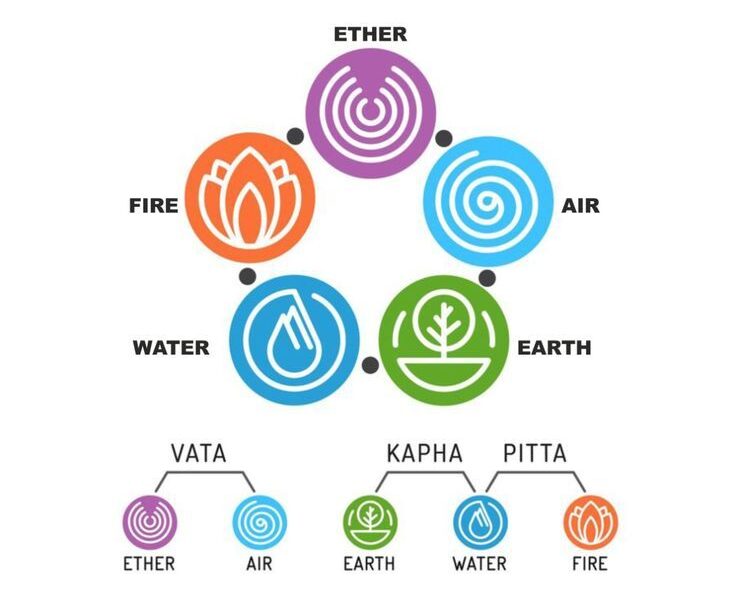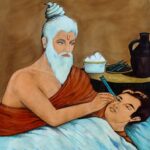Amazing Elements of Ayurveda That Can Transform Your Health Forever
Introduction: Understanding the Elements of Ayurveda
Ayurveda, the “Science of Life,” is not just a medical system; it is a holistic philosophy that has guided human health and wellness for over 5,000 years. At its core are the elements of Ayurveda, which explain how the universe and the human body are interconnected.
- Introduction: Understanding the Elements of Ayurveda
- 📜 History of the Elements of Ayurveda
- 🕰️ Timeline of Ayurveda Elements
- 🌟 The Five Elements of Ayurveda
- ✅ Interesting Facts About Ayurveda Elements
- 🌍 Significance of Elements in Daily Life
- 🌿 Observance and Applications
- 🙏 Wishing With Ayurveda Elements
- 🔍 FAQs About Elements of Ayurveda
- ⭐ Review Section – Public & Expert Opinions
- 🧘 Daily Life Impacts
- 📌 Important Points
- 🌿 Importance to Society
- 🌟 Conclusion
These elements, or Pancha Mahabhutas (five great elements), form the basis of all matter and energies in the human body. Understanding them is crucial because they help us maintain balance, prevent disease, and live in harmony with nature.
In this article, we explore the history, timeline, concepts, facts, significance, daily life applications, FAQs, and a review section of the elements of Ayurveda in a human-friendly manner.
📜 History of the Elements of Ayurveda
Vedic Origins (1500–500 BCE): The earliest mention of elements is found in the Rigveda and Atharvaveda. They describe how the body and universe are made of five primary elements.
Charaka Samhita (1000 BCE): Detailed how these elements influence physical and mental health.
Sushruta Samhita (600 BCE): Provided surgical and anatomical perspectives aligned with the five elements.
Ashtanga Hridaya (500 CE): Compiled by Acharya Vagbhata, it highlighted practical applications of the elements for therapy, lifestyle, and diet.
Modern Era: The Ministry of AYUSH promotes the understanding of these elements in education, research, and wellness programs.
🕰️ Timeline of Ayurveda Elements
| Period | Key Development |
|---|---|
| 1500 BCE | Vedic texts describe the five elements (Pancha Mahabhutas) |
| 1000 BCE | Charaka explains element balance in health |
| 600 BCE | Sushruta correlates elements with body systems and surgical practices |
| 500 CE | Ashtanga Hridaya formalizes application of elements in daily life |
| 20th Century | Revival of Ayurveda with focus on elements in education and therapy |
| 21st Century | Global promotion of Ayurvedic elements in wellness, research, and lifestyle |
🌟 The Five Elements of Ayurveda
1. Earth (Prithvi)
Represents stability, structure, and solidity.
Found in bones, teeth, and tissues.
Imbalance causes lethargy, weight gain, or constipation.
2. Water (Jal)
Symbolizes fluidity, cohesion, and lubrication.
Present in blood, lymph, and other bodily fluids.
Imbalance can cause swelling, edema, or digestive issues.
3. Fire (Agni)
Governs metabolism, digestion, and transformation.
Found in digestive enzymes and body heat.
Imbalance may lead to acidity, inflammation, or skin disorders.
4. Air (Vayu)
Controls movement, circulation, breathing, and nerve impulses.
Present in lungs, nervous system, and intestines.
Imbalance can cause bloating, gas, anxiety, or joint pain.
5. Ether (Akasha)
Represents space, consciousness, and subtle energy.
Found in cavities, respiratory tracts, and body spaces.
Imbalance may result in mental stress, confusion, or insomnia.
✅ Interesting Facts About Ayurveda Elements
Ayurveda connects the macrocosm (universe) with the microcosm (human body) through elements.
The elements influence doshas: Vata (Air + Ether), Pitta (Fire + Water), Kapha (Earth + Water).
Panchakarma therapies aim to restore elemental balance.
Each food, herb, and lifestyle habit impacts elements differently.
Ayurvedic seasons (Ritucharya) adjust elemental dominance naturally.
Meditation and yoga help balance subtle elements like Ether.
Modern wellness practices like detox, aromatherapy, and mindful eating are inspired by these principles.
🌍 Significance of Elements in Daily Life
Health: Proper balance ensures immunity, energy, and vitality.
Diet: Foods are selected based on how they affect elemental balance.
Lifestyle: Daily routines, sleep, and exercise maintain harmony of elements.
Mental Health: Balancing Ether and Air enhances clarity, creativity, and calmness.
Healing Practices: Ayurveda uses herbs, massages, and therapies to correct elemental imbalances.
🌿 Observance and Applications
Eating seasonal and local foods to align with natural elemental shifts.
Using warming foods in winter (Fire & Earth) and cooling foods in summer (Water & Ether).
Daily self-massage (Abhyanga) using oils to balance Vata (Air & Ether).
Practicing yoga and pranayama to harmonize Air and Ether elements.
Detox therapies like Panchakarma to remove excess Fire or Water elements.
🙏 Wishing With Ayurveda Elements
“May your body’s elements be in perfect harmony, your mind remain calm, and your life be filled with energy, health, and balance.”
🔍 FAQs About Elements of Ayurveda
Q1: What are the five elements in Ayurveda?
Earth, Water, Fire, Air, and Ether.
Q2: How do these elements relate to health?
They form the foundation of doshas and dictate balance in body, mind, and spirit.
Q3: Can imbalance of elements cause disease?
Yes, elemental imbalance leads to physical, mental, and emotional disorders.
Q4: How can I balance my elements?
Through diet, lifestyle, yoga, meditation, and Ayurvedic therapies.
Q5: Is this applicable today?
Absolutely—understanding elements helps in stress management, nutrition, and holistic wellness.
⭐ Review Section – Public & Expert Opinions
Patients: Report improvements in digestion, mental clarity, and energy levels after following Ayurvedic element-based routines.
Ayurvedic Doctors: Highlight that understanding elements is critical for personalized treatment.
Wellness Experts: Consider Panchakarma, herbal therapies, and yoga as effective tools for balancing elements.
Global Perspective: Elements-based wellness is increasingly recognized in natural health and holistic lifestyle programs.
🧘 Daily Life Impacts
Choosing foods that complement your dosha prevents illnesses.
Incorporating yoga and meditation balances subtle Air and Ether elements.
Self-massage enhances circulation and maintains Earth & Water balance.
Seasonal routines reduce stress, improve immunity, and support mental clarity.
Mindful living encourages harmony between the individual and the environment.
📌 Important Points
Elements form the foundation of Ayurveda and dosha theory.
They impact body, mind, and spirit simultaneously.
Balanced elements promote health, longevity, and immunity.
Diet, lifestyle, and therapy are tailored to maintain elemental balance.
Ancient wisdom is compatible with modern wellness practices.
🌿 Importance to Society
Promotes preventive healthcare, reducing burden on hospitals.
Preserves cultural and spiritual heritage of India.
Inspires eco-friendly living and natural therapies.
Guides modern wellness trends like detox, aromatherapy, and mind-body practices.
Enhances mental health awareness through understanding subtle elements.
🌟 Conclusion
The Elements of Ayurveda are far more than philosophical concepts—they are practical tools for health, well-being, and longevity. By understanding Earth, Water, Fire, Air, and Ether, we can manage physical health, mental clarity, and spiritual growth.
Whether you are seeking better digestion, stronger immunity, mental calmness, or spiritual balance, incorporating Ayurveda’s elemental principles into your life can be transformative and empowering.
✨ May the timeless wisdom of Ayurveda’s elements guide you to a life of harmony, health, and happiness. 🌿









But wanna input on few general things, The website style is perfect, the articles is really good : D.